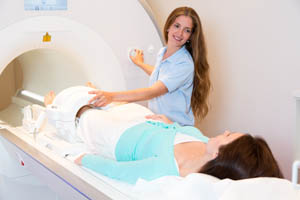I need a scan, don’t I ?
This is a question that we Physios get asked often but the answer is not a simple one. In the case of musculoskeletal pain, the answer is “you might”, as it is a myth to think you will get a clear answer.
If we turn the clock back just over 30 years, I was a student Physiotherapist at Queen Margaret College in Edinburgh. Our head of department told us then that as our careers progressed, he reckoned we would use our clinical skills less and less as new types of scans, particularly MRI scans, would give us all the answers. It has not worked out quite like that.

There is no doubt that there are many examples where scans have saved lives. Spotting tumours or showing the extent of trauma after an accident are examples of these. However, to get the best results from a scan, the Radiologist has to be asked a specific clinical question to know how to get the best image. A photographer can choose to take a general landscape picture of a Scottish Glen or focus a large lens on a tree in the distance. By focusing on the tree, the photographer is able to spot the deer sitting underneath that is not noticed in the general shot. The same principle applies to scans. If a patient presents with back pain and signs suggest a disc injury, a scan can focus in on the suspect area and get an accurate picture of exactly what is putting pressure on the nerve.
The next challenge is to interpret the result in the context of what is “normal” and decide what best to do for appropriate treatment. We now know that there is poor correlation between scan findings and symptoms. For example:-
- A study of the necks of 1211 people aged between 20 – 70 discovered that 87% of them had a disc bulge on scan but all of them were pain free.
- A systemic review of 5397 knees showed that of the over 40s, 43% had Osteoarthritic changes and 19% had a cartilage tear. Of the under 40s, 14% had arthritic changes and 11% had a cartilage tear. All of these people thought they had “normal” knees with no pain.
- On a review of the MRI scans of Olympic athletes, 52% showed on scan what was reported as “moderate to severe spinal disease”, but all were competing at elite level.
Life is a constant wear, tear and repair process for our bodies. Sometimes a scan will identify something that seems really scary when written in a medical report, but does not mean that our backs, knees or any other areas need treatment. For the health professional, we must always remember to treat the person and not the picture. All findings must be put in context. Was the right scan performed at the right time to get the best information to plan the right treatment for the person in front of us? For this, clinical skills will always be needed.

